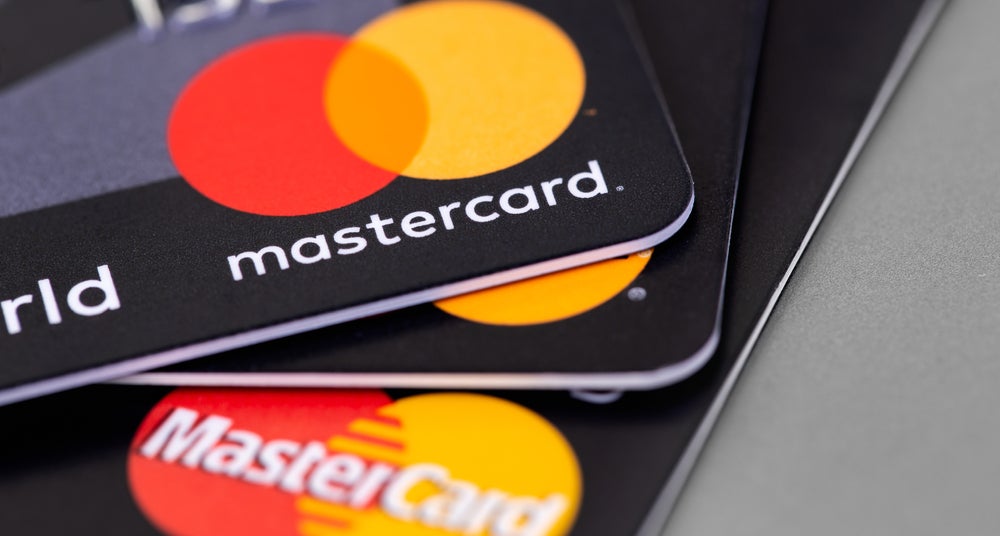The launch of the Egg World Money
credit card in the UK heralds a new era of card products targeted
at mass affluent consumers, with a wide array of features aimed at
high transactors. But it also comes with an annual fee, and many in
the industry are now asking if such fees will become more
commonplace. Victoria
Conroy reports.
 Credit card issuers in the UK
Credit card issuers in the UK
have resigned themselves to the fact that they are unlikely to see
the levels of profitability they enjoyed just a few years ago. In
one of the most saturated credit card markets in the world, credit
losses have risen, revolving credit levels and credit spending are
on the wane, and issuers are much more cautious about taking on new
applicants from the mass market segment.
But some UK issuers are now taking a much more
segmented approach when it comes to launching products and
targeting consumers, and it is the mass affluent segment that is
currently garnering a lot of interest.
UK card issuer and internet bank Egg, owned by
US banking giant Citi, is attempting to capture a share of the mass
affluent market with its Egg World Money credit card, a revamped
version of the Egg Money card.
The existing Egg money portfolio has already
been automatically migrated to the new card, and now Egg is opening
up the portfolio to new customers, which it is hoping to attract by
offering a combination of features and rewards geared towards mass
affluent individuals.
The only other World-branded MasterCard
products launched in the UK came from Capital One (although the
card is no longer being advertised on its website) and niche
private bank Coutts, but Egg is the first major card in the issuer
to launch the product.
How well do you really know your competitors?
Access the most comprehensive Company Profiles on the market, powered by GlobalData. Save hours of research. Gain competitive edge.

Thank you!
Your download email will arrive shortly
Not ready to buy yet? Download a free sample
We are confident about the unique quality of our Company Profiles. However, we want you to make the most beneficial decision for your business, so we offer a free sample that you can download by submitting the below form
By GlobalDataOne of the stand-out features of the card is a
rewards programme that offers 1 percent cashback on all purchases,
up to a maximum of £200 per year, and discounts of up to 25 percent
at 15 online retailers including Lastminute.com and Virgin
Wines.
The card also comes with a host of
insurance-related benefits, including purchase protection on items
costing more than £75, extended warranties on electrical items
worth more than £50 and personal travel accident insurance, along
with a new feature covering event tickets over £20 which will be
refunded if the cardholder cannot attend the event.
Designed to attract
attention
According to George Greer, head of
consumer credit and charge products in Europe at MasterCard
Worldwide, Egg’s proposition is unique in the UK marketplace, not
just because of its features but also because it’s a highly
segmented offering within a segmented section of the market.
“Within the affluent space there is huge
diversity, and a number of key segments. What we’re really excited
about with Egg is that the combination of features and benefits
that they’ve put together is actually quite unusual in the
marketplace. Of course you’ve got the strong rewards programme
which I think is well tried and tested, particularly among high
transactors and the affluent community,” he told CI.
“But on top of that rewards programme I think
some of the exciting things that Egg has actually done that
supports the overall product proposition for this customer segment
are the things like the purchase protection and event cover where
event tickets can be refunded, which is quite unusual, along with
the online spend tracker that Egg offers where your statement is
categorised.
“All of that I think is quite exciting as a
360-degree product proposition, and why we’re very excited about
the revitalised product.”
Annual fees back on the
agenda
The Egg World Money card is also
bucking the trend by charging new cardholders an annual fee of £12,
at £1 per month – existing Egg Money cardholders who have been
migrated to the new version of the card will not be charged an
annual fee.
Annual fees in the UK are virtually unheard
of, although many in the industry have predicted that with the
global economic slowdown and the resulting damage done to issuer
profitability, they were bound to be put back on the agenda – and
Citi’s profitability problems are well documented. So while Egg may
have taken a bold step forward with its new card, is it in danger
of turning off consumers who are used to paying nothing for the
privilege of having a credit card?
“Yes, there is a fee but it’s value for money
in terms of the overall value proposition. Citi did research before
the launch of this product and the research very much validated the
value proposition of warranting an annual fee. I think the annual
fee is very manageable at £1 per month and the research showed that
the consumer was prepared to pay up to £4.40 per month for this
type of value proposition. Egg has priced this under what the
consumer considered a justifiable fee,” said Greer.
Cards aimed at affluent and mass affluent
consumers have a much lower proportion of revolving balances than
mass-market cards, and Egg’s card has been designed with this in
mind. The cashback feature is structured in a way which means that
cardholders who spent at least £100 per month, and who pay off
their balances in full each month, will recoup the £1 per month fee
for the card.
“There are obviously fees that are rendered on
high net worth products in the UK, and for the mass affluent
consumer who wants this product, the features and benefits actually
stack up and there is a justification for the fee,” said Greer.
However, an anonymous industry analyst told
CI: “I would not classify the Egg Money World MasterCard as a
premium card. It would appear to be a card designed for the prime
segment rather than for a mass affluent market as the features are
more tailored to attract balance transfers and incentivise card
usage.
“This card falls into the category of
initiatives aimed to take consumer expectations away from free
cards rather than attracting mass affluent consumers.”
The re-emergence of annual fees in the UK
marketplace is something that has long been predicted by industry
analysts. Having been hit by a succession of regulatory rulings
over issuer pricing practices such as default fees beginning in
2006, UK bank profitability has been hammered over the past two
years and issuers have been struggling to find ways to recoup lost
revenue.
In its Precious Plastic 2008 report, published
at the end of 2007, global business consultancy
PricewaterhouseCoopers (PwC) pointed to annual fees as being one of
the major ways for issuers to replace income.
“It is only a matter of time before annual
fees on credit cards become the norm, but given that lenders are
reluctant to be the first to introduce fees across the board in the
current competitive market, it is hard to say when this development
will occur,” the report stated.
“While issuers have not yet taken the leap to
introduce fees in the mainstream card market, there have been
further examples of annual fees being introduced on selective
products.
“Credit card net yields after charge-offs are
at their lowest levels since the start of the millennium – the
result of a highly competitive market and increases in charge-offs.
The ‘lost profit’ amounts to £4 billion for the market as a whole.
PwC continues to believe that it is only a matter of time before
annual fees on cards becomes the norm.”
Annual fees are not unprecedented in the UK
market. PwC cites annual fees for ‘exclusive’ credit cards, which
provide cardholders with access to premium services such as
concierge services and access to airport lounges. The exclusivity
of such cards is reinforced by high minimum income requirements for
applicants. But does the launch of Egg World indicate that
so-called ‘premium’ cards are now being marketed to a wider pool of
customers, raising the question of whether they are truly premium
propositions?
Francesco Burelli, a director in the payments
team at global consultancy Deloitte, told CI that in fact, due to
economic turbulence, the size of the mass affluent market has
actually shrunk, leaving issuers with the puzzle of how to recoup
revenues from a smaller cardholder base.
“In an economic situation where card
profitability is under pressure due to rising costs [higher level
of write-offs, increased cost of compliance due to pending
regulation, higher cost of acquisition per card due to increased
level of declined applications etc], and reduced revenue pools,
banks are trying to increase card fees by repositioning them
through the addition of premium services and benefits to
cardholders,” he added.
“Annual card fees are common throughout
Europe, either for stand-alone cards in issuance or retail banking
product bundles. This is less the case in the UK where cards are
not subject to annual fees, if not for the higher income segment
cards. Overall fees are on the up and a number of issuers and banks
in the UK are working on ways to introduce fees and get consumers
used to fee-based banking services as the industry is trying to
move away from free banking.”
However, MasterCard’s Greer does not think
that Egg’s move heralds annual fees becoming more commonplace.
“I think it really depends on the product
proposition and the target segments,” he said. “Here, Citi are
targeting a specific consumer segment, they obviously have the
existing cardholder base but they have new cardholders and
consumers they’re targeting.
“Every bank needs to think about who is their
target segment, and do the research to understand what that target
segment understands and appreciates about the product, and whether
they are prepared to pay a fee for the right product.”
World platform gains
traction
MasterCard’s World platform is
certainly gaining traction in what is becoming an increasingly
segmented marketplace. World-branded programmes have now been
rolled out in Latin America, China, Malaysia, Qatar, Saudi Arabia
and Singapore. Issuers, still bruised and battered by credit losses
and uncertain economic outlooks, have over the past couple of years
reined in mass-market card issuance, and curtailed credit lending
to such a degree that in many instances, it may no longer make any
economic sense for them to roll out mass-market cards.
Many issuers, in several global regions, are
now focusing exclusively on the affluent and mass-affluent consumer
segment and according to MasterCard’s Greer, the World platform
provides them with the tools to offer distinct propositions that
will attract the ‘right’ kind of customer.
“With World, we have minimum feature and
benefit mandates. Every World product must have a competitive
rewards programme and every World product must have a minimum value
of fixed cost benefits within the product construct. That’s to
ensure that it’s targeted at the mass affluent consumer and that it
appeals to high transactors in the affluent space,” he told CI.
The launch of the Egg card also marks a higher
degree of visibility in the UK for the World platform. Although
several World-branded products are in issuance, they have been
launched mainly in the US and Asia-Pacific regions. And there are
stark differences between the behaviours of mass affluent consumers
in differing markets.
“The divide within Europe is actually between
the Anglo-Saxon countries and the rest of Europe. There’s a divide
as well between the Eastern and Central Europe markets and the
Western European continental market. What we see and what we know
is that revolving credit is much larger in the UK and Ireland and
it’s also got some traction in Eastern and Central Europe, but in
continental Europe it’s charge products that predominate,” says
Greer.
However, the appeal of a well-constructed
rewards programme crosses borders and as such has formed a mandated
component of the World platform.
Greer added: “We’ve researched this in
numerous markets across all of the different regions, and we do see
a similarity in terms of the attractiveness of rewards
programmes.”
The importance of
segmentation
Key to this are the components that
make up the rewards programme. Consumers who are being targeted for
these kinds of mass affluent cards are very savvy and have high
expectations about what level of rewards they want to receive. And
what may work in one market may not work in another.
“Segmentation is really important. That’s
where the individual market and individual customer research comes
in as being critical. Obviously this is quite a large group of
people in the mass affluent space, and one size doesn’t necessarily
fit all,” said Greer.
“It’s down to us working with issuers to look
at target markets, which determines ultimately whether it’s going
to be a cashback or points-based programme. But we’re certainly
seeing mass affluent consumers viewing having some kind of loyalty
component on their card as being critical.”
The ‘segment-within-a-segment’ concept also
needs to be taken into account, according to Greer.
“For example in France, we’re very much
leading it in terms of women’s propositions, and in other markets
products will carry rewards programmes which may be cashback if
that’s the right proposition for that market and target customer
base, or it could be something quite different,” he explained.
“One example of that is Barclays in Russia,
which launched a World proposition in Russia last month, and the
rewards programme on that is not a cashback programme but a charity
donation programme. The spend on the card by the consumer goes to a
charity rather than the consumer themselves. Reward programmes
today are more important than they were two years ago because of
the changes in behaviour and attitudes. With regard to what reward
programme is most powerful, it really depends on the customer
segment.”
With the global economic turbulence currently
dampening consumer confidence, it is the cashback component that is
becoming increasingly important to consumers.
Greer said: “I think the key theme that’s
coming through is with the economic downturn, particularly and
including the mass affluent, everyone is being more prudent with
the products that they buy, and what they spend on. That prudence
carries through to the reward programmes.
“Certainly in the research that we’ve done
we’re seeing it increasing in importance for consumers as it’s
important to them to get some kind of value from the use of their
products. That may be cashback, that may be points-based – some
kind of reward for loyalty for using the product is increasingly
important,” Greer added.
As for the World platform itself, Greer says
that MasterCard is in discussions with issuers in several
markets.
“We are having very active discussions in the
UK at the moment, but also in Italy, Poland, Russia and Ireland.
What we want to achieve with World is a product that will really
actively target the mass affluent and create a new quality kitemark
in the marketplace,” he said.
“If we do our job well and if we market and
communicate this product well, as soon as consumers and mass
affluent consumers see that World identifier upon a MasterCard
product, then they will know that it comes with a competitive
rewards programme and the appropriate features and benefits for
them.
“Every World product will be slightly
different, but every World product will have a robust and
compelling value proposition and make it a 360-degree proposition,
and not just a one-trick-pony that just focuses on one benefit and
nothing else.”
MASS AFFLUENT CONSUMERS
Global economic woes can’t
halt growing number of mass affluent customers
The number of mass affluent consumers
continues to grow worldwide, in spite of the global economic
turbulence – in the Asia-Pacific region alone, the combined
discretionary spending of affluent consumers in 12 markets will
exceed $600 billion by 2015, according to research from
MasterCard.
According to a study of Chinese consumers by
global consultancy McKinsey, in 2008 the number of wealthy Chinese
households reached 1.6 million and by 2015, that number is expected
to rise to more than 4 million, making it the world’s
fourth-largest country in terms of the number of wealthy
households.
The wealthy currently account for less than 1
percent of urban Chinese households, but their numbers are growing
at around 16 percent per annum.
Mass affluent consumers in the UK are classed
as those earning between £35,000 ($57,000) and £70,000 per year,
and various estimates suggest that there are around seven million
mass affluent consumers in the country.
Furthermore, research from MasterCard states
that only four percent of UK mass affluent consumers regard credit
cards as a ‘temptation’, with most viewing them as a convenient
payment method and a useful financial management tool.
Research from marketing specialists Mintel
indicates that mass affluent consumers are heavy users of credit
cards and rely on their cards for more than half of all their
purchases. They also spend significantly more with payment cards
than the average consumer, but are nearly twice as likely to shop
around for different credit cards as other consumers.
The global economic slowdown has impacted all
facets of consumer segments but it appears that mass affluent
consumers have been able to withstand the uncertainty with a fair
degree of resilience, and little change to their spending habits. A
US survey from Mintel published in March 2009 found around 78
percent of surveyed mass affluent consumers had not changed their
credit card payment behaviour in the last 12 months, despite the
economic turmoil.
Of mass affluent respondents who changed their
payment behaviour, Mintel found that 11 percent formerly paid
credit card balances in full each month but now do not, while 11
percent are now making smaller monthly payments. Younger mass
affluent consumers, especially those under age 45, are more likely
to be making smaller payments each month.







